Site pages
Current course
Participants
General
Lesson- 13 Plastic Containers
13.0 Introduction
The first plastics were derived from natural raw materials and, subsequently, in the first half of the 20th century, from coal, oil and natural gas. The most widely used plastic today, polyethylene, was invented in 1933 – it was used in packaging from the late 1940s onwards in the form of squeeze bottles, crates for fish replacing wooden boxes and film and extrusion coatings on paperboard for milk cartons.
Plastics are widely used for packaging materials and in the construction of food processing plant and equipment, because:
- they are flowable and mouldable under certain conditions, to make sheets, shapes and structures
- they are generally chemically inert, though not necessarily impermeable
- they are cost effective in meeting market needs
- they are lightweight
- they provide choices in respect of transparency, colour, heat sealing, heat resistance and barrier.
Gases such as oxygen, carbon dioxide and nitrogen together with water vapor and organic solvents permeate through plastics. The rate of permeation depends on:
type of plastic
- thickness and surface area
- method of processing
- concentration or partial pressure of the permeant molecule
- storage temperature.
Plastics are chosen for specific technical applications taking the specific needs, in packing, distribution and storage, and use of the product into consideration, as well as for marketing reasons, which can include considerations of environmental perception.
13.1. Plastics packaging
13.1.1 Manufacturing of plastics for packaging
The plastic raw material, also known as resin, is usually supplied by the polymer manufacturer in the form of pellets. Plastics in powder form are used in some processes. Whilst some plastics are used to make coatings, adhesives or additives in other packaging related processes, the first major step in the conversion of plastic resin into films, sheets, containers etc., is to change the pellets from solid to liquid or molten phase in an extruder.
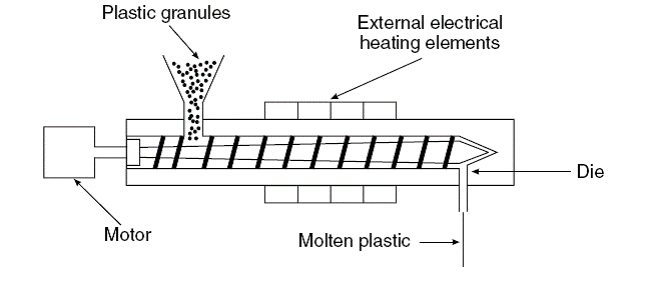
Figure 13.1 :Extruder
The plastic is melted by a combination of high pressure, friction and externally applied heat. This is done by forcing the pellets along the barrel of an extruder using specially designed, polymer-specific, screw under controlled conditions that ensure the production of a homogeneous melt prior to extrusion (Fig).In the manufacture of rigid packaging, such as bottles and closures, the molten plastic is forced into shape using a precisely machined mould.
13.1.2 Manufacturing of plastic film and sheet for packaging
The most commonly used materials for flexible packaging films are LDPE, LLDPE, HDPE, PP, and PVC. Single-layer films are generally made by extrusion, in which plastic pellets are heat-softened sufficiently to melt and flow, and then the molten plastic is forced through either a slit (slot) die or a circular (tubular) die. The semi-molten film exiting from a slit dies is cooled with a quenching water bath or chilled casting rolls. The film can then be reheated and stretched in the machine direction and/or transverse to the machine direction to orient the polymer chains in the film to improve strength, barrier, and shrink properties. One-direction orientation is called uni-axial orientation, while two-direction is called bi-axial orientation. From a circular die, the film can be blown up like a bubble to give transverse orientation while the film is being pulled to also give orientation in the machine direction. The resulting films can be used as food wraps or heat-sealed into bags and pouches.
A polymer film can be solution-coated or extrusion-coated with another polymer to produce a bilayer film with improved strength, barrier, heat-sealability, appearance, and/or printability properties. Solution coating involves coating with a solution or dispersion of another polymer and then evaporating the solvent. In extrusion coating, a semi-molten film emerging from an extruder is deposited
directly on the previously formed film. Plastic films, most often PP or PET, can also be coated with a thin layer of aluminum or glass. The aluminum is vaporized in a vacuum and then condenses onto the film surface (vacuum metallization). Coatings of SiOx can be formed onto plastic films by sputtering, evaporation, or plasma-enhanced chemical vapor deposition.
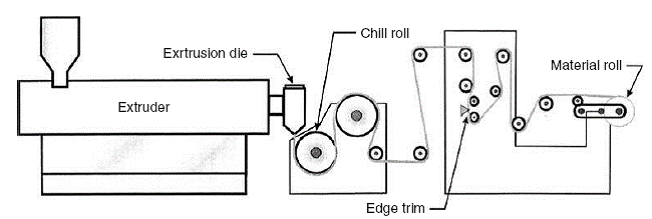
Figure 13.2: Extrusion of cast plastic film using a slit die
Two or more previously formed single-layer films can be laminated to give a multi-layer film with improved properties. The layers can be bonded by applying an adhesive between the films and then passing the laminate structure between pressure rollers (adhesive laminating). The layers can also be bonded by extrusion coating one of the films and then immediately pressing the second film against the still-molten layer (extrusion laminating). Polymer films can also be laminated with paper and/or aluminum foil to combine the properties of each material into a package structure.
In the blown film process, the molten plastic is continuously extruded through a die in the form of a circular annulus, so that it emerges as a tube. The tube is prevented from collapsing by maintaining air pressure inside the tube or bubble. In both the processes, the molten polymer is quickly chilled and solidified to produce
a film which is reeled and slit to size. For increased strength and improved barrier properties, film can be stretched to realign, or orient, the molecules in both the machine direction (MD), and across the web in the transverse (TD) or cross direction. With the blown film process, orienting is achieved by increasing the pressure inside the tube to create a tube with a much larger diameter.
13.1.3. Pack types based on use of plastic films, laminates etc.
Single films, coextruded films and coated and laminated films in reel form are used to make plastic bags, sachets, pouches and overwraps. Plastic bags are made by folding, cutting and sealing with welded seams which are also cut in the same operation. Pouches are usually made from laminates. They may be formed on the packing machine either from one reel by folding, or from two reels and sealing, inside face to inside face on three sides
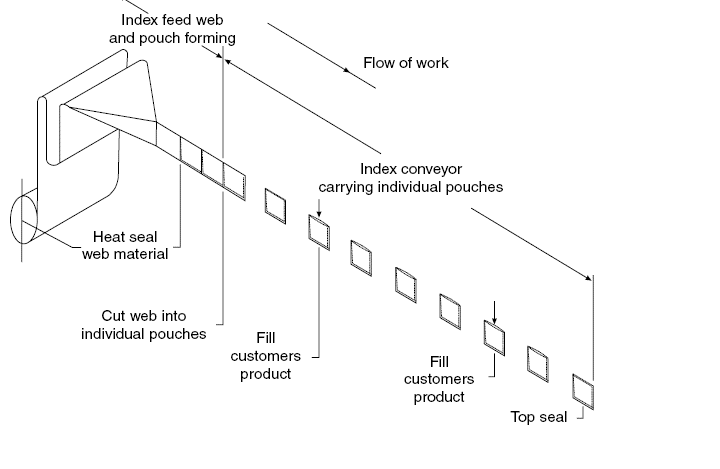
Figure 13.4: Form/fill/seal sachet/pouch machine
prior to filling and closing. The pouches travel horizontally on these machines with the product filled vertically.
Pouches can have a base gusset or a similar feature, which enables them to stand when filled and sealed. Pouches can be made separately, and they can be filled manually or fed from magazines on automatic filling machines. Free-flowing products such as granules and powders can also be filled vertically on form, fill, seal machines where the film is fed vertically from the reel. (Fig )

Figure 13.5: Form, fill, seal (f/f/s), flow pack type machine
These packs are formed around a tube, through which the previously apportioned product passes. A longitudinal heat seal is made either as a fin seal, with inside surface sealing to inside surface, or as an overlap seal, depending on the sealing
compatibility of the surfaces. The cross seal is combined with cutting to separate the individual packs.
13.1.4. Semi-Rigid and Rigid Plastic Packaging
Bottles are made by extrusion blow moulding. A thick tube of plastic is extruded into a bottle mould which closes around the tube, resulting in the characteristic jointed seal at the base of the container. Air pressure is then used to force the plastic into the shape of the mould. After cooling, the mould is opened and the item removed. Blow moulding is used for milk bottles (HDPE) and wide mouth jars.
F
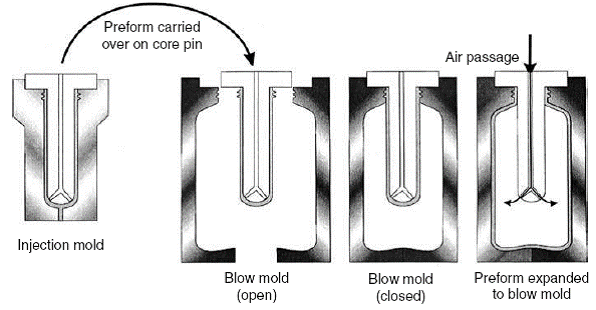
Injection molding involves heat-softening plastic pellets in an extruder and then injection of the molten plastic under pressure into a cool mold. The two halves of the mold then open to eject the solid container. PE, PP, and PS are the most commonly used materials to manufacture plastic tubs, cups, and lids by injection
molding. Retortable and microwaveable PP trays are also made by the injection molding process.
Injection stretch blow molding is similar to injection blow molding. A preform is also made in an injection mold. However, in the blowing step, a rod is used to stretch the preform longitudinally at the same time as it is being blown transversally. The resulting biaxial orientation improves strength, barrier, and optical properties.
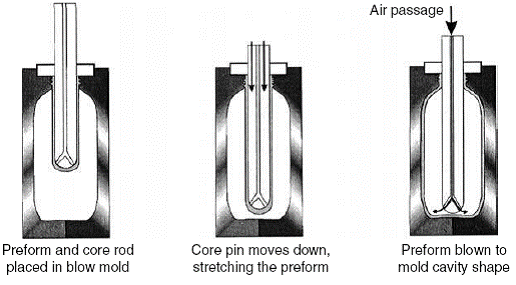
Figure 13.7: Stretch blow molding of a plastic bottle
The polymer that is most commonly injection stretch blow molded is PET for production of bottles intended for both carbonated and noncarbonated beverages. Other polymers that are sometimes molded in this manner include PVC and PP.
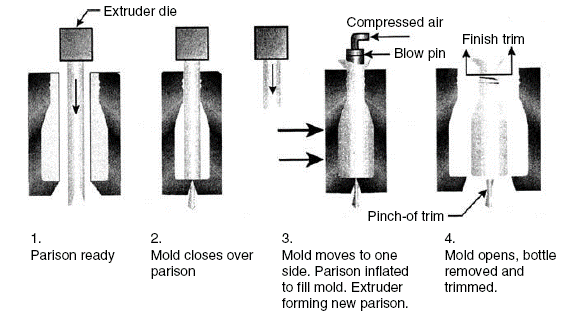
Figure 13.8: Extrusion blow molding of a plastic bottle
Extrusion blow molding involves extruding a heat-softened hollow tube (parison), quickly closing the two halves of a mold around the tube, and blowing the still-soft parison against the sides of the mold. The newly formed bottle or jug is held in the mold until cool. The mold then opens, and the bottle or jug is removed and trimmed above the finish and at the bottom where the mold pinches the parison tube.